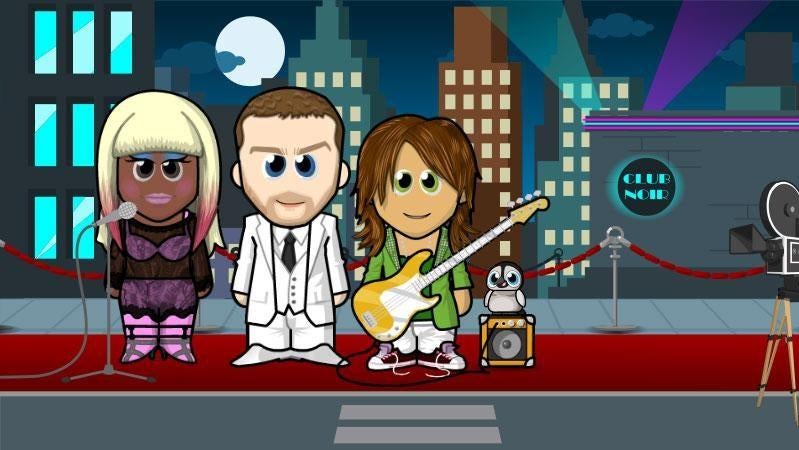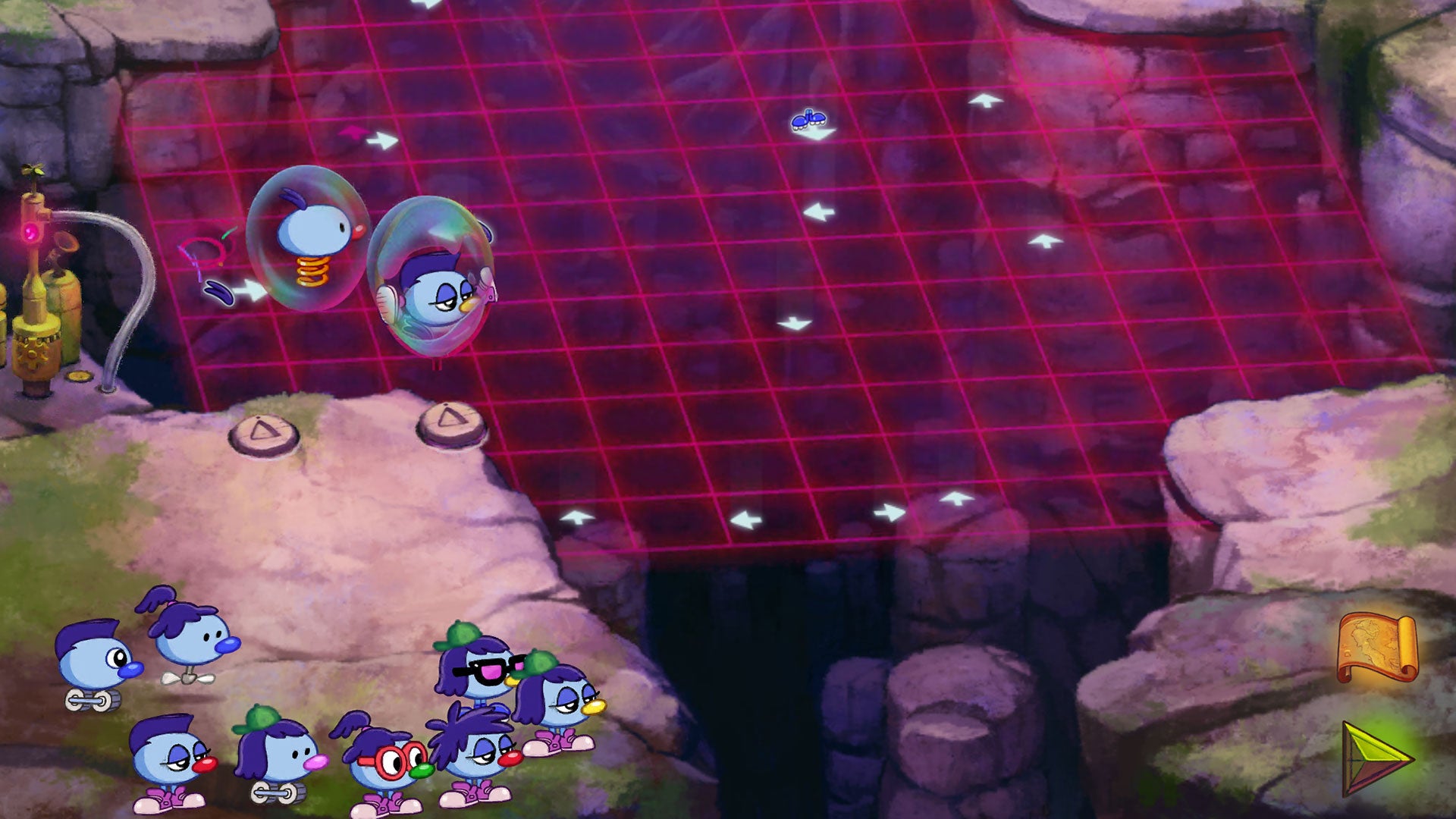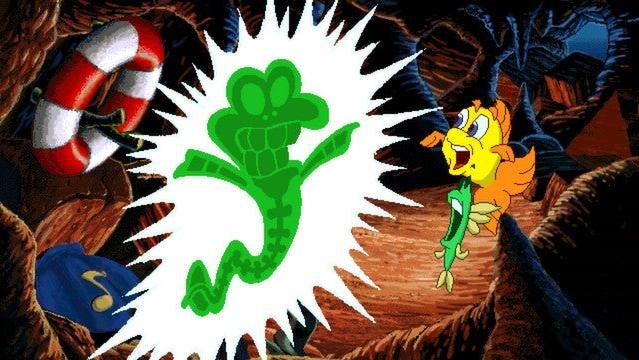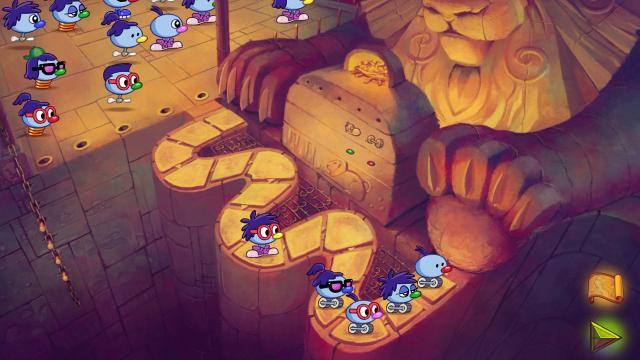I don’t like thinking about the past. But none of the new video games I play make me feel how the browser games I used to boot up on my parents’ computer and on my friends’ parents’ computers. Those web games, free-to-play, with dangerously, enticingly rotten graphics and stories, had my brain working overtime about the possibility of “games” — in 2004, when Kotaku was a newborn, I was a six-year-old only just mastering the rules of hopscotch.
Recently, and for no good reason, two different people mentioned the educational puzzle game from 1996, Zoombinis, to me. Across Instagram, TikTok, and Twitter, algorithms remind me of the Bratz dolls makeover games I played for entire school nights, the virtual worlds I joined while Mark Zuckerberg was still begging Harvard girls to go out with him.
I want to believe the world is telling me something. It’s time for me to grow up and remember the things I used to do when my emotions felt too big and sitting in chairs meant not touching the ground. Let’s walk back up online video games’ garden path together — here are eight browser games you should try to recall in all their good, gross glory.
Earthworm Jim
The 1994 sidescrolling run-and-gun Earthworm Jim, to me, is the prototypical High on Life. I can only explain this by imagining that some aspect of being a wise-cracking worm has resonated with men prescribing to the U.S.’ interpretation of masculinity for nearly two decades. We need to figure that out.
But the character Earthworm Jim does not have time for introspection. He’d prefer to flop around his empty, skinny pink scalp and win. He was a normal worm until a high-tech bodysuit gave him muscles and sentience, and gameplay involves gunning down characters like Doc Duodenum, a mucousy piece of intestinal tract, trying to pursue poor Princess What’s-Her-Name, who is too much of a girl to earn a real name, and navigating levels like “Buttville.” Yeah, this is Rick and Morty 1.0 made worse by its transphobic, Breitbart-contributing creator.
Its crass creativity is worth remembering and discussing, though. That’s how we figure out how to keep what made Earthworm Jim initially fun and enticing in newer pieces of media while cutting out its bad attitude, something that has unfortunately endured in culture. Interplay is also trying to make it into a TV show. Rick and Morty 3.0.
Dark Cut
The puzzle game Dark Cut is still running on the site I found it on after it was released in 2006, Addicting Games. I had a sick fascination with Dark Cut, where I played as a medieval doctor performing experimental medicine, made even more experimental by the fact that I was eight years old. You have to complete a series of procedures, like cutting boils open and removing arrows, without completely butchering your faceless patient, who lies still as a GarageBand synth warbles solemnly.
This game would always be the last one my friends and I would play in an Addicting Games session. I think we were both thrilled and repelled by its practical but pus-filled display of violence, so we liked building up to it.
I just played it again now — I am no more qualified to execute amputations now than I was in 2006, but I noticed that the game’s loading screen offers this piece of advice: “In case of real emergency, do not perform any of these operations or use this game as a guide. Seek professional help immediately.” I’m glad I saw this. I was about to unleash all these leeches onto my face.
BarbieGirls
BarbieGirls was an online virtual world Mattel booted up in 2007 and shut down in 2011. You could sign up for free or automatically become a VIP member by buying a Barbie-shaped MP3 player with mix-and-match clothes (I think I had this one). Otherwise, VIP membership cost $US5.99 ($8) a month in 2008.
But VIP gave you access to the game’s main function, shopping. Though the game was billed as an innovative, ballooning virtual world for girls, its main draw, at least for me, was buying and putting cute clothes onto my skinny white girl avatar. Interestingly, in 2007, Engadget called the site an MMO for “little nerds in training,” a path to “more ‘mature’ communities such as [World of Warcraft], Second Life.” But most of what I remember about this game is that it was pink. And that I, possibly, at one point, adopted a purse-sized dog.
With my adult brain, I’d call BarbieGirls more “eating disorder in training” than for “little nerds.” But a non-profit team is currently working on bringing a version of the now 11-years-dead site back with more body, race, and gender inclusivity in a project they call Barbie Girls Rewritten. I’m excited to see how (if at all) transitioning a virtual world for girls from its 2011 vision of womanhood to a modern one changes what it looks like.
Stardoll
Outside of video game websites’ comment sections, the most fucked up things online happened to me on Stardoll (or on other dress up games websites like GirlsGoGames.com and DressUpGames.com), founded in 2004.
Stardoll still exists as some shell of its former self, as far as I can tell. Its front page is mostly populated with paper dolls uploaded around 2011, around the time I used it most passionately. At that time, it was an online community centered around celebrity dress up games. Actually the BarbieGirls website collaborated with Stardoll and suggested users join it once it shut down.
The volume of paper dolls uploaded was impressive even to me, a child with no understanding of why and how computers turned on. You could style anyone from Evanescence frontwoman Amy Lee to conservationist Dian Fossey, and outside of dress up games, there were make up games, shopping plazas populated by real, groundbreaking 2000’s fashion brands like Vivienne Tam, Italian luxury brand Miss Sixty, and DKNY. There were also limited-edition “tribute” stores to established and, at the time, up-and-coming fashion greats, like Giambattista Valli, Roberto Cavalli, and Lanvin, all of which informed my love, knowledge, and criticism of fashion today.
But like BarbieGirls, Stardoll clearly perpetuated a highly specific idea of womanhood and of what a great, paper doll-worthy woman was. Skinny, white, highly interested in shopping. And its community, which I mostly engaged with through interest-based forums you could join, was filled with drama and, at least on my end, lies. Once I told people I had a boyfriend who looked exactly like Stefan from The Vampire Diaries except he was in a wheelchair. I also wrote Twilight fanfiction inspired by the 2008 Anna Faris movie The House Bunny. It was fucked up and I did fucked up things. Being 13 is hard.
WeeWorld

OK, I take back what I said, all the most fucked up things happened to me on Weeworld, the 2002 virtual world that was mostly populated by kids and, from personal experience, probably pedophiles. WeeWorld officially shut down in 2017, but in its early 2010’s heydey, it collaborated with club anthem generators like Jason Derulo and Justin Bieber. The avatars were ugly 2D South Park thumbs. Its main draw was its chat function, but I eventually got scared off the site in the process of trying to find myself a WeeWorld boyfriend.
Zoombinis

You are now entering the neutral nostalgia section of the slideshow. We begin with the educational puzzle series Zoombinis, which started in 1996 and lay dormant from 2002 to 2015. Then, the nonprofit TERC brought its first instalment to tablets, Macs, and Windows.
Zoombinis is a good game for babies. “Zoombinis” the creatures are mouthy, Smurf-y blueberries with hair, and baby players have to ace increasingly difficult puzzles to shepherd them back to their hometown, Zoombiniville. Even if you’re not a baby, there is still time to brave difficult forest paths and winding roads — Zoombinis is available on Steam for $US9.99 ($14).
Freddi Fish

The 1994 point-and-click series Freddi Fish centres on the happy goldfish Freddi, who is also a detective. A fish detective. It makes sense when you’re in the first grade.
To solve mysteries, players have to explore animated scenes, which, looking back, very obviously stole their art and style from Disney’s 1989 The Little Mermaid movie, but I was unfazed by bootlegs back then.
What was more interesting to focus on, as Associated Press noted in 1999, was the fact that Freddi was one of few female video game protagonists. Her character design is also nondescript and androgynous, early proof that women in video games didn’t need to look or act like angels for the game to be successful, an idea the later 2000’s subsequently trampled on. In honour of Freddi’s inoffensiveness, you can buy a collection of Freddi Fish games from 1994 to 2001 on Steam for $US34.99 ($49).
Line Rider
If you were online in 2006, you know Line Rider, a malleable platformer where you draw lines, slopes, and spots for its flat protagonist to coast on. In 2008, when Line Rider made it to the iPhone app store, Kotaku founder Brian Crecente glowingly announced himself “pretty psyched.” You can play Line Rider for free in your browser.
Thanks for going back in time with me. It only made me a little bit uncomfortable. I’m making it your turn — what are some web games you’ll never forget, but everyone else already seems to have lost to time? Tell me in the comments while I check on my 15-year-old Poptropica account.

Leave a Reply